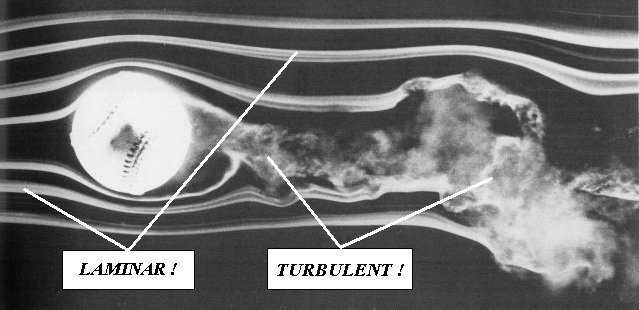www.leguman.ht.st
| head losses |
pumps |
convection |
| Conduction + Convection |
| Wb effect on the fluid flow |
| Radiation |
©
2001 - 2002.
|
| previous | ||
|
Flow nature of a fluid The flow regime can be either laminar or turbulent,
depending, for a given fluid, on the cooling system geometry in
contact with the fluid and on the fluid velocity.
For a given cooling system, the flow will become turbulent beyond
a certain velocity of the fluid and it will be more especially as
velocity increases. The following picture shows the differences between laminar and turbulent flow, for the latter the dye is much more mixed and homogenized.
Photo from the book " An album of fluid motion, Van Dyke, The Parabolic Press " Now that we have in mind how a fluid is characterized, it is still necessary to dig a little more to manage to understand how the convection coefficient h behaves. In what follows, we will see what happens to the fluid close to the solid's surface, as it is here where everything of interest will occur. This zone bears the sweet name of the boundary layer. |
||
| previous |
